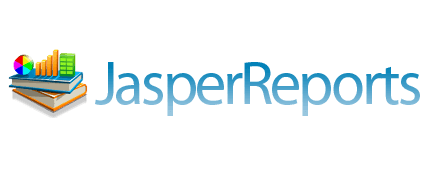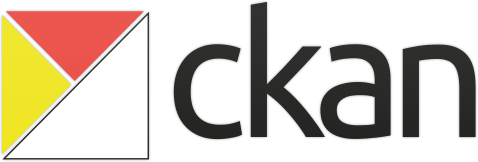Our platform brings independence, scalability and disruptive technologies to the business
| Table of Contents |
|---|
...
Engine Modules
Module | Technology | Offer | |
|---|---|---|---|
API Manager | API Manager allows to appify ontologies, digital flows and swagger APIs. These APIs are viewed from a Portal and are exposed via OpenAPI. Gravitee-based extension, for advanced apification scenarios, for throuling control, advanced security policies and other protocols | ||
Flow Engine | Flow Engine allows you to model business logic as process flows between components that encapsulate the logic. Node-red is used as the execution engine. | ||
Rules Engine | Rules Engine module allows you to create business rules on the platform using the DRL (Drools Rule Language) language. Technology based on Drools. Works with JSON format both in input and output | ||
Identity Manager | All the elements of the platform will be secured by configuration using oAuth2 as security standard. Allows the definition of Realms, Single Sign On, integration with LDAP and Active Directory and encryption of data and communications | ||
Geo Services | Platform supports GIS store, query and visualization. GIS viewer based on Cesium representing GeoJson. It allows to define a field type as geometry, being able to store in this field the longitude and latitude of a point, following the GeoJSON standard | ||
Persistence | Isolates the information in the platform from the underlying repository. The repository always offers a unified access SQL interface. It supports several database technologies like MongoDB, Elasticsearh, Neo4j and relational databases as oracle, sql server, mysql, posgress, etc.. | ||
Semantics | It allows to manage semantics in the Platform in a unified way and adapts the semantic model according to the type of Data Model chosen by the solution provider. Lightweight semantics based on JSON (such as GSMA, Fiware Data Model) and transformations from other semantics (JSON-LD) are supported | ||
MSA Support | Fully support for the creation of micro services and management of their complete life cycle, from the compilation of the code (based on templates and archetypes) to the deployment in CaaS | ||
Digital Broker | Allows devices, systems, APPs, etc., to communicate with the platform in a bidirectional way. To do this, it supports several protocols including MQTT, REST, Web Sockets, Kafka, and it offers client APIs for different languages so that communication with the platform is as simple as possible | ||
BPM Engine | The Platform incorporates Camunda as BPM Engine, an open-source solution that offers all the required capabilities, from Workflow Engine, Decision Engine, Modeler, TaskList, Cockpit, Optimizer. In the integration it is provided with multi-tenant capacities and the security is integrated with the platform. |
...
Module | Technology | Offer | |
|---|---|---|---|
DataFlow | It allows you to configure data streams between sources and targets + processors (platform, files, database, ...) It is the mechanism to use when the platform is going to collect information from the source system and not the one that sends it to the platform. Platform implementation is based on Streamsets components that allows more than 100 different source/target connectors | ||
Notebooks | This tool allows data scientists to exploit, visualize and create models and algorithms on the information managed by the platform, in a simple way and with the main languages used in ML, such as Spark, R, Python, ... all of this with the platform's underlying security. Based on Apache Zeppelin, we can import notebooks from other tools like Jupyter | ||
DataRefiner | This module allows you to load data in different formats (XSL, CSV, XML, JSON) from my PC, the Internet or the platform itself (through an SQL query) and work with them to clean, improve, restructure or reconcile them. before loading them on the platform as Ontology. | ||
DataMining Tool | Allows a non-expert user to make easily data interactive analysis, exploratory data analysis, train and execute models or visual programming. Platform team recommends to use Orange as Data Mining tool open source machine learning and data visualization for novice and expert. Interactive data analysis workflows with a large toolbox | ||
Cognitive | Set of APIs for use in applications that require the use of artificial intelligence (AI). It allows to consume services of different PaaS including among others: Language: text analysis, entities, feeling; Translation of texts; Image Analysis including OCR, detection of entities; and Speech: enabling TextToSpeech | ||
Dashboard Engine | It allows the platform's user to create visual dashboards that exploit the information in the platform whatever the repository, supporting drill-down, permissions, complex visualization of different gadgets | ||
Report Engine | Users can attach a Jasper template (.jrxml format) created in a Jasper Reports editor as JasperSoft Studio. Data adapter to connect to a REST web service. This mechanism is supported by the JSON and XML data adapters and supports the PUT, POST, and GET verbs. | ||
Open Data Services | CKAN is an Open Source data portal which provides tools in order to publish, share, find and use data. Its basic unit are datasets, where the data is published, and they are composed by resources an metadata. The resources store the data itself in several formats (CSV,XML,JSON…). The CKAN tool has been integrated in Onesait Platform as a new module and we can manage organizations, datasets and resources and publish them as ontologies from the Control Panel module. | ||
Data Hub | This module uses Hadoop to store, manage and process large volumes of data efficiently and cheaply. Uses HIVE and Impala / Presto for online queries |
Things Modules
...
Module
...
Technology
...
Offer
...
IoT/Edge Broker
...
Component that allows devices and gateways to communicate with the platform in a bidirectional way. To do this, it supports several IoT protocols including MQTT, OPC, COAP, Kafka, and it offers client APIs for different languages so that communication with the platform is as simple as possible
...
Device Management
...
A console allowing to manage and operate the devices of the IoT solutions. Edge Management System Cloud is a web application running in Cloud server that allows managing remotely all the Edge Gateways deployed in the field. It´s have a bidirectional communication with the devices without the need for the physical presence of a technician to solve it, allowing an absolute control over the devices remotely as if we were in the field
...
Synoptics
...
Focused on the creation of IoT systems in which Edge and Cloud capabilities of the platform can collaborate, allowing bi-directional communication with devices, modeling and deployment. This synoptic functionality is very useful in industrial scenarios where you need to be monitoring and acting on physical signals. The synoptics allow you to create SCADA-type representations and real-time dashbaord
...
Digital Twins
...
This component includes a Digital Twin Broker, a semantic modelling based on the Web Thing API and the generation of executable code. You can interact with and orchestrate the different digital twins registered in the Platform from the Flow Engine
...
Edge Engine
...
Hybrid strategy to process data near where they are generated. Increase in speed, safety and cost reduction. Edge Computing architecture based on containers, a set of technical components that implement this architecture and a set of tools for the development, deployment and governance of the entire life cycle of computational nodes and applications at the edge .
...
Workload Consolidation
...
Unified Framework for Industrial IoT®, which is supported by Edge Computing and Workload Consolidation Architecture (EWLC™). Enabling contextual ML models with low latency and automation acquisition over RF and wired networks
DevOps Modules
Module
Technology
Offer
Operation Console



























